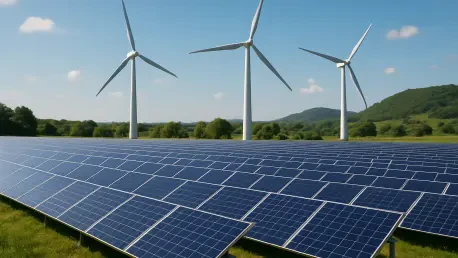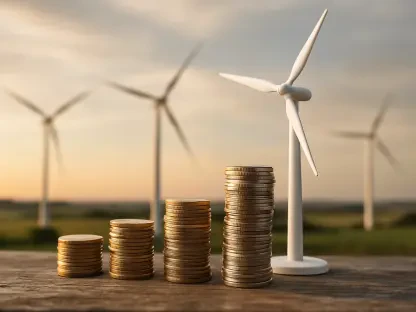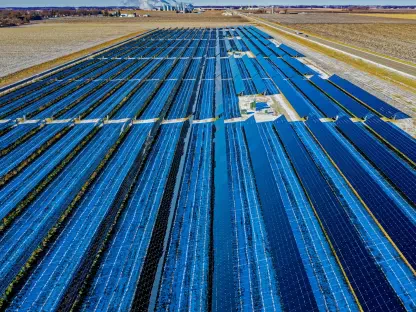The rapid evolution of clean energy technologies marks a significant leap forward in the renewable energy industry, as environmental sustainability becomes increasingly critical. Innovations in solar, wind, and other renewable sources promise not only to meet the growing global energy demand but also to reshape entire energy landscapes. With their potential to mitigate climate challenges, clean energy innovations are highly relevant, offering solutions that align with the broader push toward a sustainable future.
Evolution and Relevance of Clean Energy Technologies
Clean energy technologies are grounded in the principles of harnessing natural processes to generate power without harmful emissions. Emerging amid growing environmental concerns, these technologies are instrumental in reducing reliance on fossil fuels. From solar panels that capture sunlight for electricity to turbines that convert wind into energy, these innovations represent a critical pillar of the renewable energy sector. As the global focus shifts toward sustainability, these clean technologies are carving out their space in the technological advancements landscape.
In the current technological ecosystem, clean energy’s role is more relevant than ever. The commitment to reducing carbon footprints, coupled with rising environmental awareness, has fueled the demand for efficient renewable energy solutions. As a result, these technologies are seen as pivotal in driving sustainable growth across various industries, paving the way for significant progress in tackling climate change.
Advancements in Clean Energy Features
Solar Power Breakthroughs
Recent years have seen profound advancements in solar power technology, characterized by innovative photovoltaic materials and enhancements in efficiency. New technologies enable solar panels to capture more sunlight and convert it into electricity with unprecedented efficiency levels, making solar power more accessible and economically viable. These improvements are critical in expanding solar energy’s role in the global power mix, offering an effective pathway to clean energy transition.
Additionally, the integration of solar technology into existing energy systems has magnified its impact. By reducing dependency on traditional power sources, solar advancements not only drive sustainability but also bolster energy security and economic resilience. As research further explores these avenues, solar power stands poised to continue its upward trajectory in clean energy adoption.
Wind Energy Innovations
Wind energy technology has undergone remarkable enhancements, with refinements in turbine design and functionality. Modern turbines are now larger, more efficient, and capable of capturing wind energy under various environmental conditions. These improvements translate to increased power output and enhanced reliability, making wind energy a viable alternative to conventional power generation.
Real-world applications showcase wind technology’s efficacy in diversifying energy portfolios and reducing carbon emissions. As wind farms become a staple in energy strategies worldwide, the technology’s expanded capabilities demonstrate its significance within a sustainable energy framework. The ongoing evolution promises even greater efficiency and integration into future energy infrastructures.
Latest Developments in Clean Energy Sphere
Recent developments in clean energy have focused on expanding capabilities, particularly in energy storage and integrated systems. Advanced battery technologies and smart grids highlight this progression, allowing for more stable and efficient energy storage and distribution. Such innovations are key to overcoming intermittency challenges associated with renewable sources, providing consistent and reliable power.
Moreover, the trend toward energy integration pivots on comprehensive systems that seamlessly blend various clean technologies. These integrated efforts have prompted shifts in both consumer behavior and industry practices, as stakeholders recognize the economic and environmental benefits of clean energy solutions. These shifts are crucial in shaping the trajectory of renewable energy initiatives.
Real-World Deployments of Clean Energy Technologies
Clean energy technologies have found numerous applications across diverse sectors, underscoring their versatility and impact. In transportation, electric vehicles powered by renewable sources are becoming mainstream, reducing emissions and reliance on non-renewable fuels. Similarly, agricultural operations increasingly utilize solar and wind energy, optimizing processes and minimizing environmental footprints.
Urban planning also benefits from clean energy, as cities incorporate these technologies to power infrastructure and enhance environmental quality. These real-world implementations are testament to the transformative potential of clean energy, offering tangible solutions for sustainable urban and industrial development.
Addressing Challenges and Limitations
Despite significant progress, clean energy technologies face challenges that could impede wider adoption. Technical issues such as energy storage inefficiencies and integration complexities pose hurdles. Regulatory barriers and market dynamics further complicate the landscape, affecting deployment rates.
Efforts to address these challenges are ongoing, with research focusing on overcoming technical limitations and shaping supportive policy frameworks. By addressing these barriers, the clean energy industry aims to enhance technology performance and broaden acceptance, fostering a transition toward sustainable practices.
Looking Ahead: The Future of Clean Energy Innovations
Looking ahead, the trajectory of clean energy technologies appears promising. Developments in energy storage and system efficiencies are anticipated to drive breakthroughs that enhance sustainability efforts. Emerging technologies hold the potential to revolutionize energy models, delivering increased efficiency, accessibility, and impact on a global scale.
As industries and governments continue to prioritize clean energy, anticipated advances are likely to fuel further innovation. The long-term implications of these developments suggest a robust shift towards renewable energy adoption, positioning clean technologies as central to sustainable economic and environmental strategies.
Conclusion and Final Assessment
The review highlights the significant strides made in clean energy technologies, outlining their profound potential for impactful environmental and economic change. Breakthroughs in solar, wind, and emerging technologies showcase impressive advances, while real-world applications underline their practical benefits. Although challenges persist, concerted efforts to resolve these impediments reflect a commitment to enhancing the widespread adoption of clean technologies.
The path forward underscores the need for continued innovation and strategic investment to unlock the full potential of clean energy solutions. As advancements and adaptations progress, these technologies promise lasting contributions to a sustainable and secure energy future.









